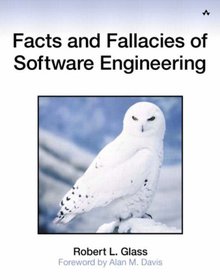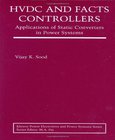Facts and Fallacies of Software Engineering

Book Details:
| Publisher: | Addison-Wesley Professional |
| Series: | Addison Wesley |
| Author: | Robert L. Glass |
| Edition: | 1 |
| ISBN-10: | 0321117425 |
| ISBN-13: | 9780321117427 |
| Pages: | 224 |
| Published: | Nov 07 2002 |
| Posted: | Nov 19 2014 |
| Language: | English |
| Book format: | |
| Book size: | 0.9 MB |
Book Description:
The practice of building software is a 'new kid on the block' technology. Though it may not seem this way for those who have been in the field for most of their careers, in the overall scheme of professions, software builders are relative 'newbies.' In the short history of the software field, a lot of facts have been identified, and a lot of fallacies promulgated. Those facts and fallacies are what this book is about. There's a problem with those factsand, as you might imagine, those fallacies. Many of these fundamentally important facts are learned by a software engineer, but over the short lifespan of the software field, all too many of them have been forgotten. While reading Facts and Fallacies of Software Engineering , you may experience moments of 'Oh, yes, I had forgotten that,' alongside some 'Is that really true?' thoughts. The author of this book doesn't shy away from controversy. In fact, each of the facts and fallacies is accompanied by a discussion of whatever controversy envelops it. You may find yourself agreeing with a lot of the facts and fallacies, yet emotionally disturbed by a few of them! Whether you agree or disagree, you will learn why the author has been called 'the premier curmudgeon of software practice.' These facts and fallacies are fundamental to the software building fieldforget or neglect them at your peril!
Download Link:
Related Books:
The Technical and Social History of Software Engineering
'Capers Jones has accumulated the most comprehensive data on every aspect of software engineering, and has performed the most scientific analysis on this data. Now, Capers performs yet another invaluable service to our industry, by documenting, for the first time, its long and fascinating history. Capers' new book is a must-read for every software engineering student and information technology professional.' - From the Foreword by Tony Salvaggio, CEO and president, Computer Aid, Inc. COVERAGE INCLUDES The human need to compute: from ancient times to the modern era Foundations of computing: Alan Turing, Konrad Zuse, and World War II Big business, big defense, big systems: IBM, mainframes, and COBOL A concise history of minicomputers and microcom...
Principles and Applications of Electrical Engineering
Rizzoni provides a solid overview of the electrical engineering discipline that is especially geared toward the many non-electrical engineering students who take this course. The hallmark feature of the text is its liberal use of practical applications to illustrate important principles. The applications come from every field of engineering and feature exciting technologies such as Ohio State's world-record setting electric car. The appeal to non-EE's is further heightened by such special features as the book's Focus on Measurement sections, Focus on Methodology sections, and Make the Connection sidebars....
HVDC and FACTS Controllers
Applications of Static Converters in Power Systems
HVDC and FACTS Controllers: Applications of Static Converters in Power Systems focuses on the technical advances and developments that have taken place in the past ten years or so in the fields of High Voltage DC transmission and Flexible AC transmission systems. These advances (in HVDC transmission and FACTS) have added a new dimension to power transmission capabilities. The book covers a wide variety of topics, some of which are listed below: -Current Source and Voltage Source Converters, -Synchronization Techniques for Power Converters, -Capacitor Commutated Converters, -Active Filters, -Typical Disturbances on HVDC Systems, -Simulation Techniques, -Static Var Compensators based on Chain Link Converters, -Advanced Controllers, -Trends in Modern HV...
2007 - 2021 © eBooks-IT.org



